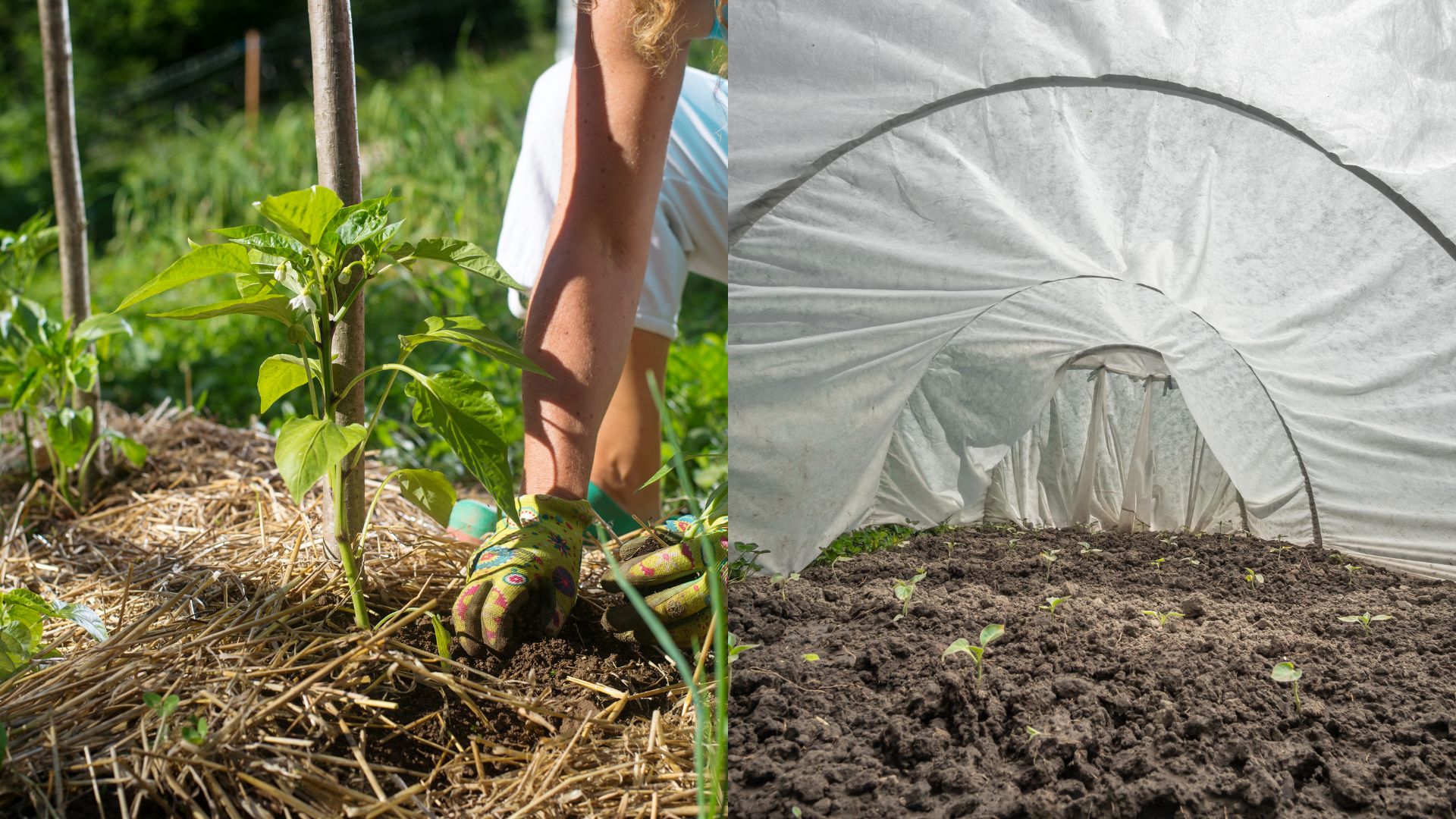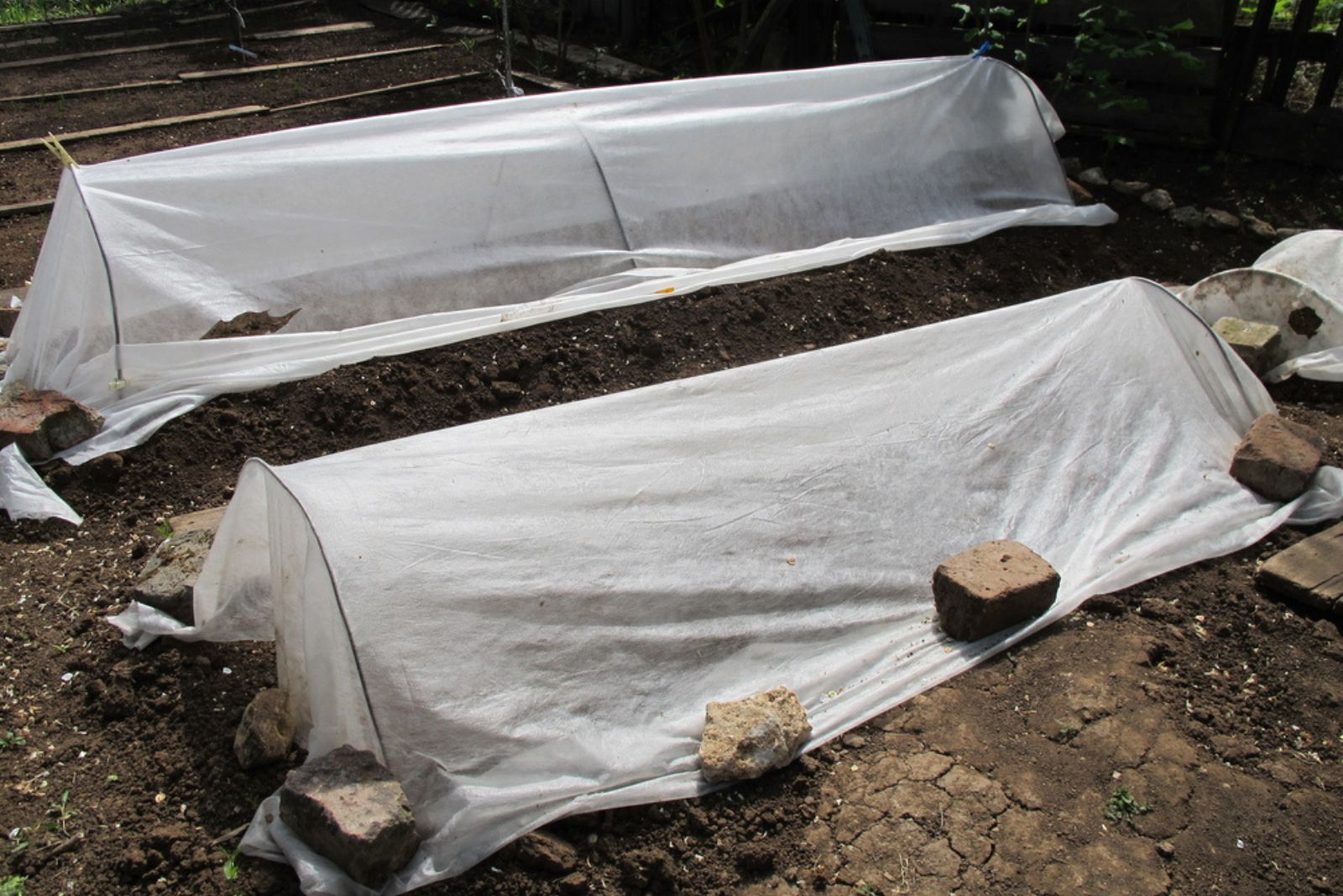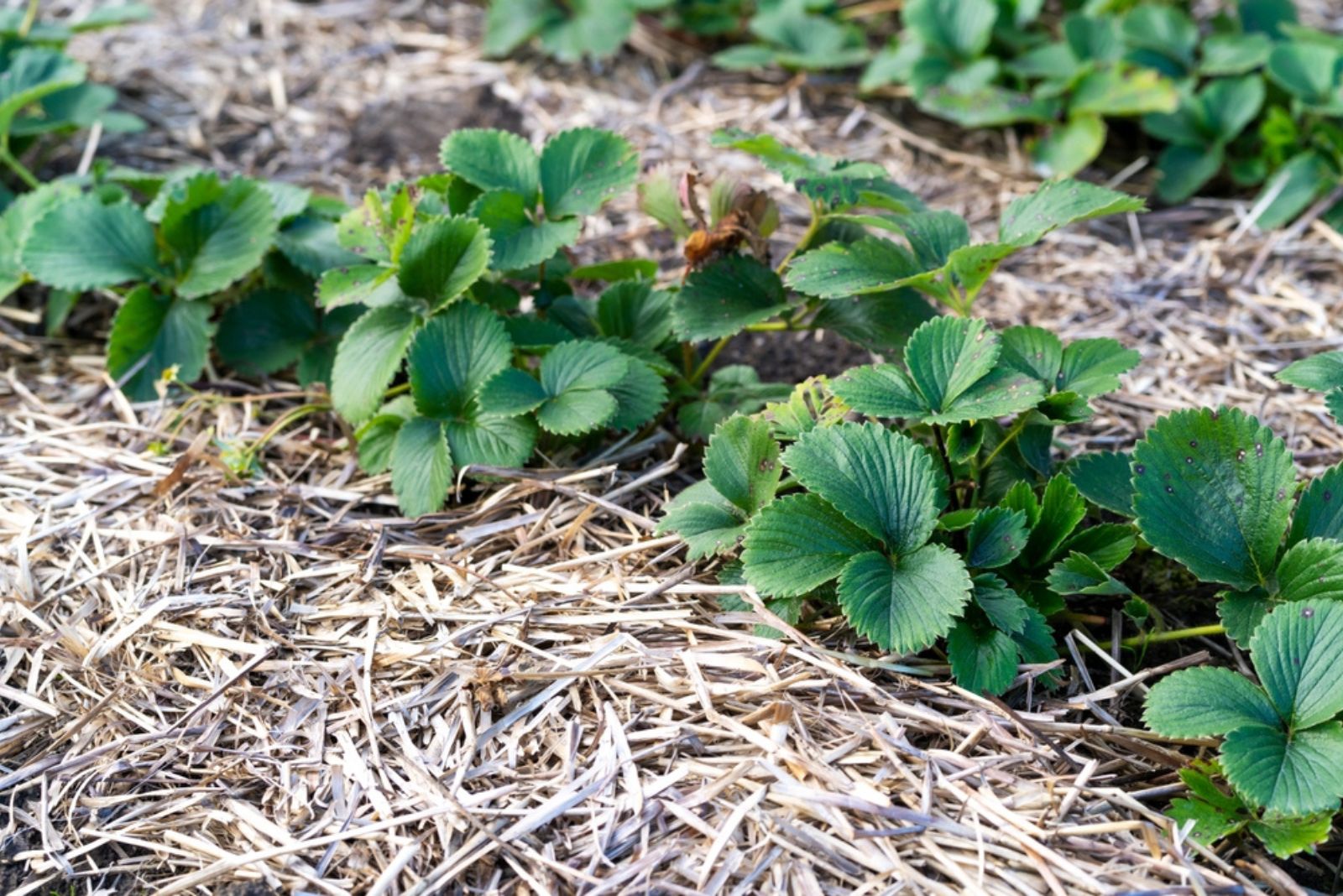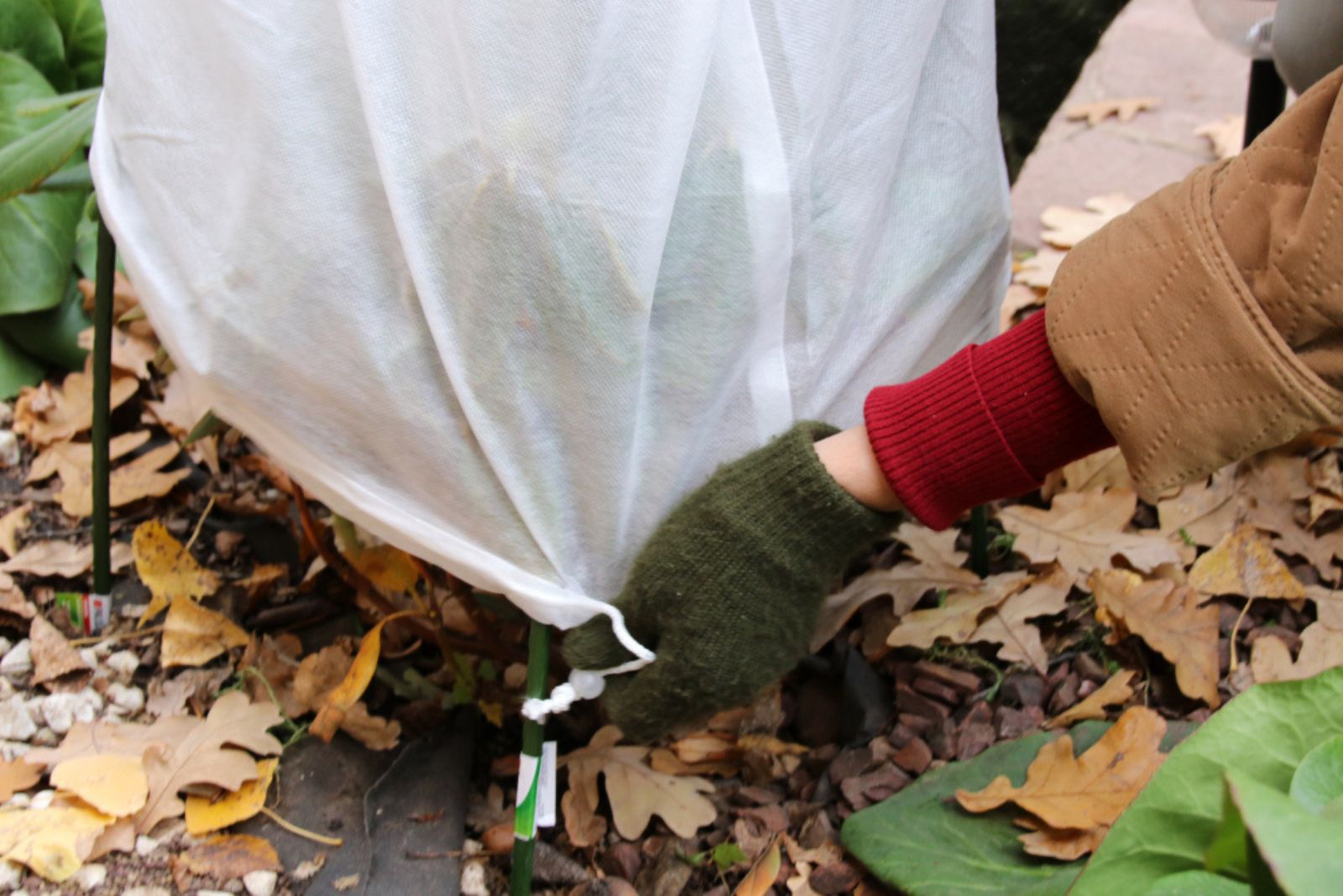We’re at that time of the year when it’s not yet fall, but we’re in full preparation mode for it. I’m talking about planting fall veggies and preparing the ground for winter survival.
And this preparation is frost protection.
How do you keep your plants safe from this phenomenon from fall through spring?
Here are some tips and tricks that can help you keep your plants, trees, and shrubs safe until the next growing season.
Let’s get started!
Frost vs Freeze
The first step to keeping your plants safe in the cold is distinguishing between frost and freeze.
Frost is frozen dew and it typically occurs at temperatures of around 33-36°F. Of course, it can occur in lower temperatures as long as there is enough humidity in the air that condenses into dew which later freezes and turns into frost.
Freeze refers to air temperatures which drop below 32°F. At this point, we see most cold damage done to plants if they’re not adequately protected.
Plant cell walls break due to the pressure caused by the expansion of water when it turns into ice. This can lead to petal drop, destruction of flower buds, stem injury, etc. (1)
Spring Frost
Spring is the season of transplants, and they’re the most sensitive group in the plant category. They’re extremely susceptible to frost damage.
But they’re not the only ones!
Trees, shrubs, and perennials are also in danger of being harmed by frost because they’re just waking up from dormancy and need warm temperatures to continue their growth.
Frost can damage their delicate tissue and cause the flower buds to drop or get severely damaged.
Here are some tips that can help you keep all your plants safe during spring frosts!
Seedlings And Transplants
One of the common planting mistakes is planting your fruit, vegetables, and flowering seedlings too early, or rather before the last spring frost.
They will have the best chance of survival if you move them outdoors once all the danger of frost has passed because spring frost is something completely different than the fall frost.
Warm temperatures throughout the spring trick the plant into producing new growth, which is then highly susceptible to frost damage and can destroy your entire yield.
Therefore, always check when the last spring frost date is in your region and monitor the weather forecast for about 10 days before moving your plants outdoors.
Trees And Perennials
The spring frost isn’t any better on trees and perennials. If they’re not protected, you risk losing their flowers and fruits for the season because the frost will damage their flower buds.
Ornamental perennials, trees, and shrubs should be fine during light frost, but you should still protect them in case spring frost is prolonged or becomes super harsh.
Fall Frost
It’s not uncommon for the first fall frost to take you by surprise. But, believe it or not, it’s actually not super important to protect all your plants during this period.
Most of them are done with growing for the season and entering the stage of dormancy. So, if you’ve acquired plants that are suitable for your USDA zone, you might not even have to protect them at all.
Still, if you do, here are some tips that can help you out!
Trees And Perennials
Trees, shrubs, and many other ornamental plants are the kinds of plants that benefit from this temperature shift because it induces their dormancy.
Lilac shrubs, roses, and English ivy are all plants that you don’t need to cover to help them overwinter.
And when it comes to annuals, they’re already pretty much done growing by the time first fall frost comes knocking on your door.
They may gain new strength after the first frost passes, but you don’t have to lose your wits worrying about how to keep them alive as long as possible.
However, most gardeners are pretty much done for the season at this point, so all they look forward to is pulling those annuals from the ground and getting warm and cozy indoors.
And yet, if they look gorgeous and you want to get the most out of them, you can cover your annuals with a frost cloth to help them get through the initial cold.
But bear in mind that begonias and impatiens are particularly sensitive to freeze damage.
Fruits And Vegetables
Cool-weather crops can usually withstand light frost and even improve in flavor as the temperatures drop. Think of all those carrots, turnips, beets, parsnips, and kale that you thought dead by the end of the first frost only to find them more delicious than ever.
And yet, most summer fruits and veggies, such as tomatoes, peppers, eggplants, cucumbers, and melons can’t stand frost and do benefit from a frost cloth.
Many of these plants will get damaged by plunging temperatures and you’ll notice that by seeing their blackened foliage and dark spots on their fruits.
Protect Your Plants At Any Time Of The Year
Now that you know how dangerous frost can actually be, let’s discover some protection methods that can help you keep your plants safe during the cold period.
Mulch
Mulching your vegetable garden and fruits is one of the best ways to protect them from harsh winter.
Cover your early season fruits, such as strawberries, with a 2-3 inch layer of straw or grass clippings to help them overwinter.
If you have trees, shrubs, and other perennials that are suitable for your USDA zone, you don’t have to protect them.
However, if they’re on the margin of your zone, you should consider mulching them with wood chips and then remove them once the plant wakes up from dormancy.
P.S. Hardwood mulch isn’t the best option for vegetable plots because it takes longer to decompose.
Frost Cloth
Fabric frost cloths are your best bet against light frost as long as they don’t get wet. These materials are specifically designed for keeping plants safe during cold weather and will still allow light to penetrate through, keeping the air up to 4 degrees warmer on the inside.
And they’re multifunctional, so you’ll be able to use frost cloth for pest-control later in the season for your lettuce and leafy greens.
The good news is that you don’t have to buy these things if you don’t want to. You can upcycle your old bed sheets and lightweight blankets.
Adapt coat hangers to be able to stick in the ground and keep the fabric in place or just hop to your local hardware store and get some U-clips for landscape fabrics.
Finally, you can use row covers carried on a raised frame so that they don’t touch the plants. These are perfect for protecting seedlings from spring frosts.
Row covers will enclose the heat emitted from the soil and plants and keep the seedlings warm enough until the danger passes.
Plastic
You can also use plastic to keep your plants safe, but that isn’t the best option because it can create new problems.
You’ll have to DIY a greenhouse or build a structure to carry the plastic because it shouldn’t touch your plants or else they would freeze.
It will increase moisture around the plants’ tissue and transfer the cold, causing more severe frost damage, according to horticulturist Kim Carslile who posted this fact on Quora.
You’ll also have to remove plastic every morning to let some air in so that your plants don’t suffer from high humidity and get a fungal infection.
Water
Finally, you can use water to help your plants become more resistant to cold-inflicted damage.
Irrigating your plants just before the freeze can help create a bit more warmth. The water will lose heat more slowly, making the transition into cold easier. (2)
Combine this method with covering your plants with frost cloths, and you’ll get a foolproof way of protecting your plants over winter.
Protecting Individual And Potted Plants
If you don’t need to protect your entire garden, but just some individual or potted plants, you might take a different course of action.
Here is some info that can help you out during this process!
Individual Plants
One of the best ways of protecting individual plants is using hot caps. These are covers for single plants designed to keep them warm during the cold season.
Therefore, you can get a store-bought wax dome, or use inverted jars, containers, or glass cloches if you want to be fancy.
They’re quite effective at keeping your plants safe from light frosts, although you have to make sure they cover your green buddies in their entirety with minimal foliage touching.
Potted Plants
Don’t forget about your container garden; these plants need winter protection, too.
The type of protection depends on the size of the container. You can take your plants in a garage, shed, or basement where it isn’t too hot to mess with their dormancy, but keep them protected from harsh conditions.
You can also try burying the planters in the ground or using mulch for potted plants. Cover the containers entirely with straw or wrap them in some other material to insulate them and prevent the soil from freezing.
References:
1. Steil, A. (2023). Cold and Freeze Damage to Garden Plants. ISU Extension and Outreach; Horticulture and Home Pest News.
2. Mauntean, L. (2019). How To Prepare Your Plants For Cold Weather. Texas A&M Today.




